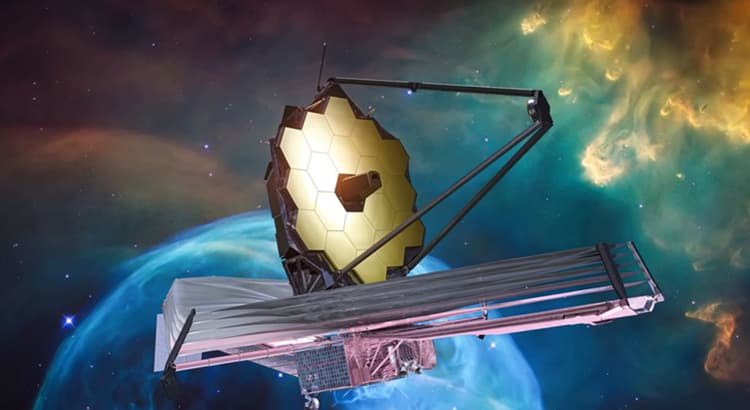Greetings, fellow cosmic enthusiasts! The arrival of the James Webb Space Telescope (JWST) has sparked a myriad of questions, with one shining brightly among them: What light does the James Webb telescope see in?
Let’s embark on a journey to explore the fascinating world of the electromagnetic spectrum and unveil the specific wavelengths that JWST is designed to capture, opening a new window to the wonders of the universe.
The James Webb Space Telescope, positioned at the second Lagrange point (L2), boasts an arsenal of instruments designed to explore the cosmos in the infrared part of the electromagnetic spectrum.
Unlike the Hubble Space Telescope, which primarily operates in the visible and ultraviolet regions, JWST’s focus on infrared observations enables it to penetrate cosmic dust clouds, peer through star-forming regions, and study the atmospheres of distant planets and galaxies with unparalleled precision.
To understand the light that JWST sees, we must first comprehend the electromagnetic spectrum, which encompasses a broad range of wavelengths.
Traditionally, the spectrum is divided into different regions, including radio waves, microwaves, infrared, visible light, ultraviolet, X-rays, and gamma rays. The James Webb Space Telescope’s primary domain is the infrared portion, offering a unique and vital perspective on the universe.
The Near-Infrared Camera, or NIRCam, is one of JWST’s flagship instruments. Operating in the near-infrared range, NIRCam captures light with wavelengths longer than those visible to the human eye.
This instrument is crucial for observing the formation of galaxies, detecting the faint light emitted by the earliest galaxies in the universe, and exploring the mysteries of dark matter.
The Mid-Infrared Instrument, or MIRI, extends JWST’s capabilities into the mid-infrared range. MIRI is specially designed to study the atmospheres of exoplanets, enabling scientists to analyze the chemical composition and potential habitability of these distant worlds.
Its capabilities also extend to the study of distant galaxies and the evolution of stars.
While the visible light we see with our eyes spans a relatively narrow range within the electromagnetic spectrum, JWST’s focus on infrared allows it to detect longer wavelengths that are invisible to us.
This infrared sensitivity is essential for studying celestial objects that emit predominantly in the infrared, such as cooler stars, dust-obscured regions, and planets that radiate thermal energy.
The Webb Space Telescope’s unique ability to see in the infrared unlocks a treasure trove of astronomical mysteries. For example, it enables astronomers to peer through the dusty clouds surrounding stellar nurseries, revealing the birthplaces of stars and planetary systems.
Additionally, JWST’s infrared prowess allows it to study the atmospheres of exoplanets, providing insights into their composition and potential suitability for life.
As we eagerly await the inaugural scientific observations from JWST, the anticipation is palpable.
The telescope’s focus on the infrared spectrum promises to revolutionize our understanding of the universe, offering a complementary view to the observations made by its predecessor, the Hubble Space Telescope.
In conclusion, the question, “What light does the James Webb telescope see in?” invites us to appreciate the intricacies of the electromagnetic spectrum and the specialized capabilities of the James Webb Space Telescope.
With its emphasis on the infrared, JWST is poised to illuminate previously unseen facets of the cosmos, revealing the hidden wonders that lie beyond the reach of our eyes.
As the telescope begins its mission, we stand on the cusp of a new era in astronomical discovery, where the universe unfolds in a tapestry of infrared hues. Happy cosmic exploration!





